
Campus—Langrun Garden
Langrun Garden in Peking University, in the Haidian District of Beijing, is located to the north of Minghe Garden and Jingchun Garden, and to the south of Wanquan River. Formerly known as Chunhe Garden, the Garden was owned by Prince Yonglin in the Reign of Jiaqing Emperor in Qing Dynasty. In the period of Emperor Xianfeng, the Garden was conferred to Prince Yixin and was renamed as Langrun Garden. According to History of Peking University by Mr. Hou Renzhi, Langrun Garden was returned to the Ministry of Internal Affairs in 1898 - the 24th year of Emperor Guangxu's Reign - after Prince Yixin died.
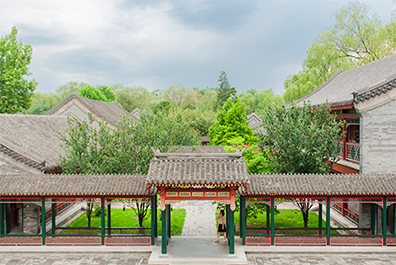
For a time, it was used as the conference venue for Qing Dynasty ministers serving the court at the Summer Palace. At the end of the Emperor Xuantong period, the Emperor Puyi was afraid that the Garden might be damaged by warlords and conferred it to Prince Zaitao. Later, it was taken over by Yanjing University (now called Peking University). The eastern part of Langrun Garden is now home to the China Center for Economic Research at Peking University. Zhifuxuan in its east section has been the venue for large events such as public lectures and conferences, and other halls are now used as offices and study venues for the Center.
Between October 1995 and May 1997, the China Center for Economic Research raised money to renovate and expand Langrun Garden. Peking University even set up a commemoration tablet on the day of completion. Mr. Hou Renzhi, a respected scholar, collaborated with Professor Zhang Xin of the Archaeology Department in compiling a Record of Renovating Langrun Garden, which traces the history of the Garden, and records the entire renovation process. The Record tells the history of Langrun Garden in concise and plain language. The inscription on the stone tablet was written in red by Professor Zhang Xin. Now the tablet stands directly in front of the Zhifuxuan of the China Center for Economic Research. Zhifuxuan used to be the living place of Prince Yixin; the three characters on the inscribed tablet were personally written by Emperor Xianfeng. Visitors to the Building, by reading the Record, might be informed of the history of Langrun Garden.
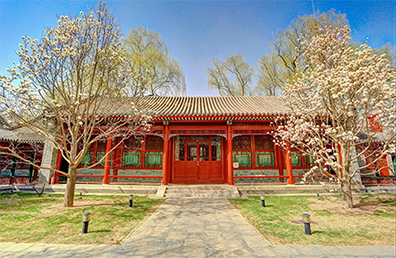
After the first phase of renovation was completed, Langrun Garden began to function as a venue for staff offices for the China Center for Economic Research. However, the space was not sufficient for the Center. In 2001, supported by Mr. Wan Zhong, a Taiwan compatriot, Wan Zhong Garden was built to the east of the main body of Langrun Garden, and an independent courtyard was formed with Wan Zhong Building in the center. All architecture in the garden is in the form of ancient pagoda-styled courtyard buildings, retaining the original appearance of Langrun Garden. All buildings in it are connected by corridors, adding a new attraction to the Yan Garden in Peking University. The garden is named Wan Zhong Garden in honor of Mr. Wan Zhong for his generosity, and also to express the will that all people (in Chinese, Wan Zhong literally means 10,000 people) will unite for one goal. Professor Justin Yifu Lin, a famous economist and President of the China Center for Economic Research, wrote an inscription on a tablet in front of the Wan Zhong Building.
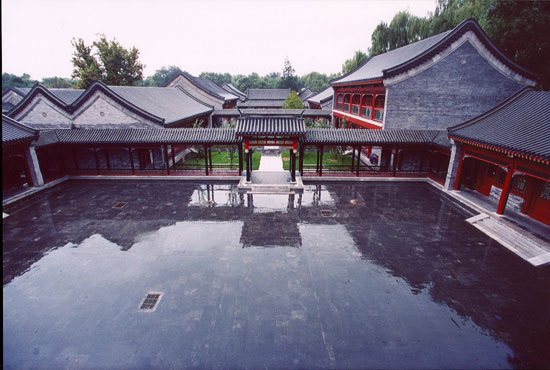
朗润园
朗润园原名春和园,清嘉庆年间为乾隆帝第十七子永璘之赐园,故又俗称庆王园。道光末年转赐恭亲王,始称朗润园。光绪廿四年奕訢去世,朗润园收归内务府。此时慈禧太后常居颐和园垂帘听政,朗润园一度成为内阁军机处及诸大臣议事之所。一九一一年清帝逊位,朗润园仍属皇室所有,后来赏与醇贤亲王奕譞第七子载涛为私邸。二十年代初燕京大学建校,征得此园,作为教员住宅。
据《春和园地盘画样全图》与《样式雷图籍》载,朗润园主要建筑分中、东、西三所,早期共有大小房屋一百五十余间,游廊亭阁等数十间。咸丰二年,奕訢曾大事修缮和增建,当时全园大小房屋共有二百三十七间,游廊七十七间,足见当日之辉煌。物换星移,风雨百年,园内东所与方亭等诸多建筑已荡然无存。所幸主体建筑虽然年久失修,榱桷圮损,丹青剥落,然而大体风貌依旧。
一九九四年年八月中国经济研究中心成立,是北京大学进行教学和科研体制改革的一种新探索,也是吸引海外留学人员回国服务的一种开创性尝试,旨在汇集一批杰出经济管理学者,为北京大学的教学和科研、为中国经济的改革和发展、为当代经济学、管理学理论的研究做出贡献。
中国经济研究中心成立后,北京大学将朗润园划归中心使用。一九九五年十月至一九九七年五月,在香港有识之士钱果丰先生及其朋友的大力支持下,中心修复了朗润园东部主体建筑——致福轩。
一九九九年,台湾实业家万众先生慷慨出资在致福轩东对朗润园扩建二千一百平方米。朗润园新建部分命名为“万众苑”,既志万众先生捐资兴学之举,亦取万众一心为中华民族之复兴同心协力之义。
朗润园从清末中枢议政的场所,到现在中国经济研究中心的所在地,历百年沧桑,服务于中国改革和发展的性质依然。中国经济研究中心已经成为国内经济学教学与科研实力排名第一的机构,也是国内最著名的经济政策咨询机构之一。
致福轩
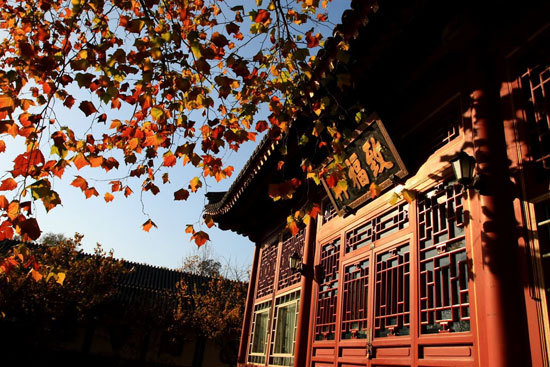
位于朗润园内,清咸丰帝当年御匾致福轩,恭亲王题壶天小境匾及张恺等人书法藏之高阁,神采宛然。一九九七年五月,获香港名士钱果丰、利国伟、曹其锋等慷慨捐助重修朗润园致福轩,作为以吸引海外经济学者回国工作、发展中国经济研究与教学为宗旨的北京大学中国经济研究中心办公场所。
万众苑
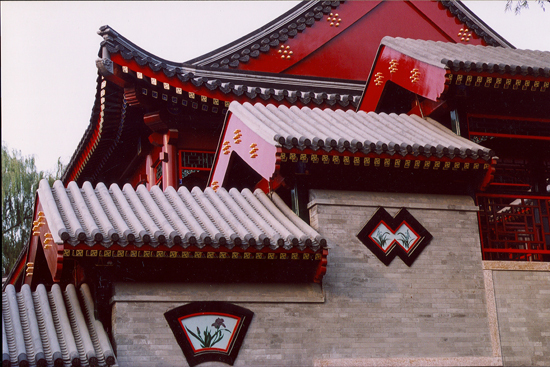
万众苑位于北京大学未明湖北,昔日皇家园林朗润园内,与圆明园一墙之隔,为中国经济研究中心新建办公院落,凡正屋楼阁轩房廊屋共一二九间, 与致福轩回廊曲径相通,假山错落,花木扶疏,小桥映带,湖水环抱,亭台楼阁,绿树掩映,既有江南园林之古韵,又富皇家殿宇之神采。1999年春,台湾亚陆投资股份有限公司董事长万众先生捐资助建。2001年10月16日,新院落成取名万众苑,一则铭谢万众先生义举,二则谨记万众一心之意。
承泽园
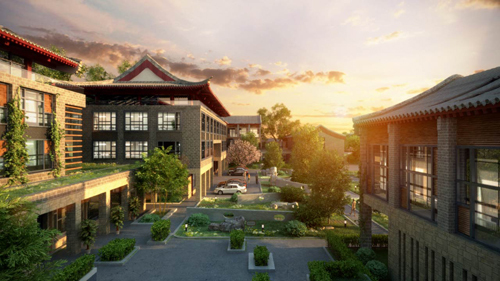
波光粼粼的未名湖是北大校园里的明珠,无数学子梦寐以求的地方。如今,未名湖的美丽风光将向西延展,直抵承泽园,这里将是北京大学国家发展研究院未来的新校区。
承泽园校区占地面积1.95公顷,属清代皇家花园,建于雍正三年。这里据西山自然之势,曾经廊榭凝香,迭石堆秀;花草幽香,荷塘迎风。作为国家发展研究院的新校区,这里将在恢复古典园林之幽雅的基础上,新增宏伟的教学设施。现代建筑既体现中国古典建筑之风范,又不失灵活和丰富的现代功能,既是独具北大特色的园林建筑,也充分体现国家发展研究院深厚的文化积淀和锐意创新的精神。
这些新设施包括动静平衡,振翅欲飞的篮球场,这个篮球场将在全国所有经济和管理学院里一枝独秀。还有阶梯教室,为学生提供学习探讨,交流分享的空间。多功能报告厅可容纳300人,拥有海纳百川的气势,为学术交流提供自由的空间。水幕咖啡厅,为师生提供自由交谈、思想碰撞的区域。下沉花园,充分体现了低碳、环保、会呼吸的有机建筑设计理念。我们有理由相信,在朗润园人的精心恢复与设计下,新的承泽园将不仅像过去一样携未名湖之灵气,衔西山之悠远,而且新旧相宜,底蕴与创新和谐,更显国家发展研究院之学术魅力。
